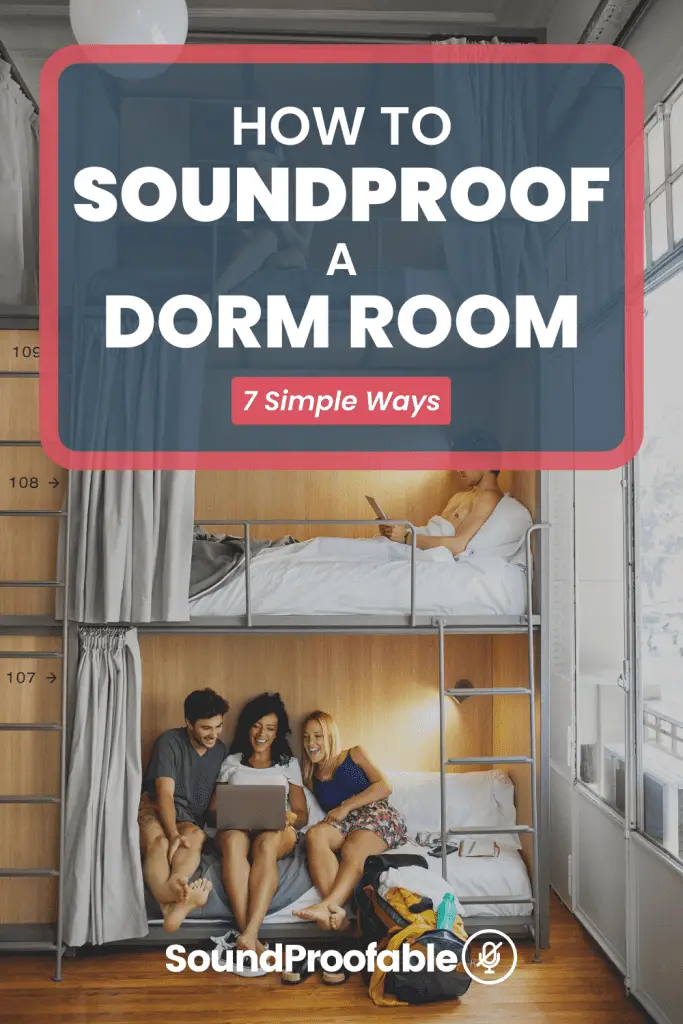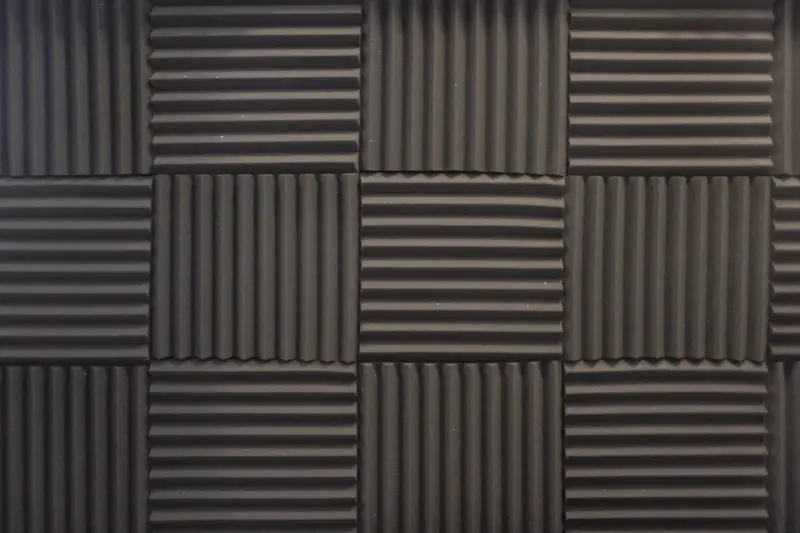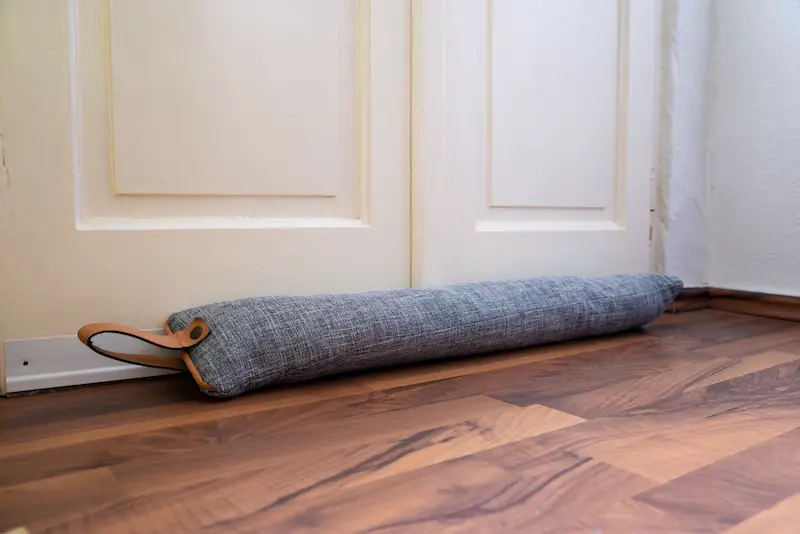Anyone who has lived in a dorm room will tell you that it isn’t always the quietest experience.
Not only do you have to deal with your roommate’s noise, but there’s also a whole floor full of people and activities at any given time. Loud music, parties, pregaming, and moving mattresses are commonplace and can get in the way of an already difficult study session.
If all the noise is starting to do your head in, you might start to wonder how to soundproof a dorm room. Dorm walls are usually pretty thin, but there are still several ways you can dampen how much noise enters your living space.
In this article, we’ll go through some methods you can use to soundproof your dorm room. While some are easy, like moving your furniture around, others may require a bit more effort. Keep reading to find out how you can study in peace while there’s a rager going on outside.

1. Buy a Rug

Putting down a rug or carpet is hands down one of the easiest ways to reduce noise in your dorm room. The soft material absorbs the sound waves as they travel, reducing the vibration and intensity of the noise produced.
Thick and heavy rugs are the best options for soundproofing your dorm room. The more mass, the better it is at absorbing sound. Also, it’s better to buy a larger rug than a smaller one. It should cover a wide surface area so sound can’t penetrate through another part of the floor.
If you’re deciding between different carpeting, shag rugs are typically your best bet. They’re thick enough to stop sound from coming through but also incredibly comfortable underfoot. And let’s not even mention the vibes. Everyone loves a shag rug.
In terms of materials, wool or faux wool are great options. However, while faux wool is a bit cheaper, they’re both fairly expensive.
Polypropylene or nylon are more budget-friendly but still do a good job of soundproofing your dorm room. Plus, they’re often stain and damage-resistant, so you can have your friends over without ruining the carpet.
To improve your soundproofing even further, buy a soundproof foam pad to go under the rug. That way, almost no noise can get through your floors.
2. Move Your Furniture
Another great way to soundproof your dorm room is to move around the furniture in your room. You can also buy more furniture to fill it up, let’s be honest; your dorm room probably doesn’t have enough space for any more.
Odds are, your dorm room has a couple of beds, desks, and dressers. It might not seem like you have much space to work with at first, but things will begin to open up once you start reorganizing.
First, identify the areas of your room that are the noisiest. Then, reposition your furniture to cover the wall where the noise is coming from. The furniture will hopefully make a solid difference in how much you hear and how clearly.
In general, big and heavy furniture does a good job repelling sound from outside your dorm room. However, it isn’t too common for dorm room furniture to be very high quality. The pieces are usually thin wood or faux wood, which sound can travel through pretty easily. If you can, replacing some of your furniture with better pieces will help with your noise problems.
Also, simple things like elevating your bed and installing under-bed drawers may improve your soundproofing more than you might think. Doing so helps cover more surface area along the walls and floors, resulting in less noise coming through.
Don’t worry if you really don’t have any space to reorganize your furniture, though. There are still a bunch of different ways you can soundproof your dorm room.
3. Decorate Your Walls (with Acoustic Tiles)

It might sound obvious, but the more things you hang on your wall, the fewer sounds you’ll hear from outside. While you might already have a few posters up for decoration, there are much better things for soundproofing that are relatively cheap to buy.
Consider putting up some foam acoustic panels to help soundproof the wall. Something like these ones will be great.
If you want something more temporary you could also use thick soundproof blankets or even quilts on your walls and door. The soft materials are fantastic for absorbing sound and can create a cool and inviting atmosphere for the space.
Pictures can work as well, but just make sure the frame is thick enough to absorb sound. A thin frame won’t do much for soundproofing.
More professional options for soundproofing your walls include soundproof curtains and acoustic foam tiles. Tiles are the absolute best thing for soundproofing, but they tend to be more expensive than other options.
Higher quality coverings will obviously be more expensive, though the cheapest won’t be great for soundproofing. If you’re on a budget, try to find a good balance of quality and price, or your wall hangings won’t have the desired effect.
Get creative with designs that match your style, and your room will be the talk of the floor in no time!
4. Cover Your Ceiling
Not many college students are blessed with penthouse views. If you can’t get any sleep because of your upstairs neighbors, it’s time to soundproof your ceilings.
The same concept for soundproofing your walls applies to covering your ceilings. Aim for thick, soft tapestries or foam padding that will absorb not only the sound waves but the physical vibrations from movement as well.
Acoustic foam tiles are another great tool for covering your ceiling. However, the best thing to use to soundproof your ceiling is Mass Loaded Vinyl (MLV). It’s pretty simple to install but is definitely more expensive than the other dorm room soundproofing options.
Even if you don’t have upstairs neighbors, covering your ceiling can help you deal with other noise sources as well. Sound waves reverberate (or echo) around a room. Covering the ceiling helps prevent the sound from traveling around your room as much, preventing any potential echo.
However, you might already know that it’s difficult to hang tapestries upside down on your ceiling without some help. Enlist a few floormates and request a ladder from maintenance to get the job started right. Tacs or staples will work well and are simple to remove at the end of the semester.
5. Seal Your Door Gap

A common problem area of many dorm rooms is the door. Like with the furniture inside the room, dorm room doors aren’t typically made from high-quality oak or padded with soundproofing foam.
No, they’re usually just a cheap as your dresser drawers, and block sound even worse because of the gap at the bottom. In fact, your door gap is probably the worst spot for sound in your room. There’s absolutely no protection from noise, entering unmuffled and clear as day, especially when someone is right outside.
Sealing your door gap is possibly the best way to soundproof your room. There are plenty of cushioned gap protectors you can get online or in-store, and they don’t cost much. The padding is great at absorbing sound and covers one of the only open areas in your room.
However, sometimes a towel works just as well. If you need a quick fix to soundproof your dorm room, just throw your towel down to seal the door gap. It might not look pretty, but it will get the job done.
6. Use a White Noise Machine
- THE ORIGINAL WHITE NOISE SOUND MACHINE: Beloved by millions since 1962, the Dohm...
- CUSTOMIZED SOUND EXPERIENCE: With two speed options for adjustable tone and volume,...
- UNBEATABLE QUALITY & GUARANTEE: For over 60 years, YOGASLEEP has been the gold...
White noise machines have become an increasingly popular answer for soundproofing your dorm room. They’re relatively cheap but surprisingly effective at canceling out the noise that’s bothering you.
These devices project ambient sound. While this might seem counterintuitive, the white noise actually helps mask and reduce other noises coming from outside. It matches the vibration and frequency of the sounds and, in the process, repels them back where they came from.
Also, white noise machines can help you focus on the task at hand. By constantly projecting the same sound, the machine makes your brain actually forget that it hears the white noise. As a result, you can sleep or study like there is no noise at all.
7. Get Some Good Noise Canceling Headphones

Many headphones nowadays advertise that they’re noise-canceling, but in reality, they just muffle the sound around you. Truly high-quality headphones have incredible noise-canceling ability to the point that you won’t be able to hear anything, even if nothing is playing.
As we all know, though, noise-canceling headphones can be pretty damn expensive. While a pair might not be as much as decking your entire dorm room out in MLV, it’s still enough to make you hesitate, especially on a college student budget.
If your goal is only to soundproof your dorm room, then consider one of the other methods we’ve listed above. However, if you just want to block out noise when it gets bad, then a good pair of noise-canceling headphones will do the trick.
Plus, you can block use headphones outside of your room, essentially letting you soundproof your life. Pretty good deal, right?
Summing up the Soundproofing Your Dorm Room
Anyway, that’s it for our article on how to keep your dorm room quiet. We hope it has been helpful in offering you some simple solutions to help create a peaceful study environment.
Soundproofing a dorm room so you can study in peace without any unwanted distractions from roommates or neighbors is not that difficult if you know the right tricks.
Happy studying!

